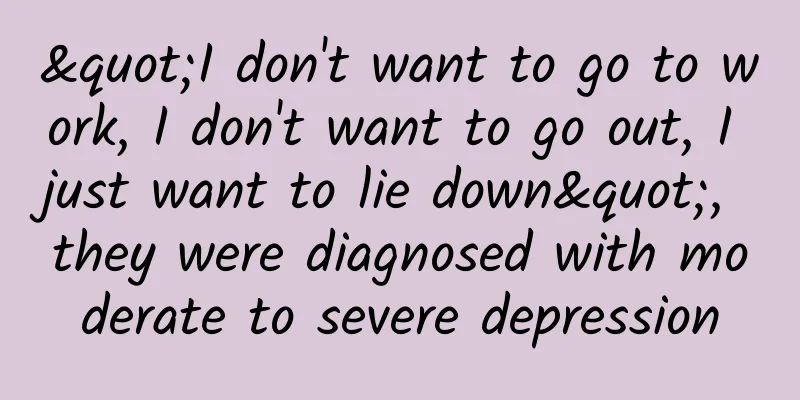Blocking AIDS and outperforming the golden "72 hours"

|
—— Prevention of non-occupational exposure to human immunodeficiency virus (HIV) Author: Chen Jingde, deputy chief physician of Jiuquan People's Hospital Reviewer: Du Hua, Chief Physician of Gansu Provincial Central Hospital, Chairman of the Dermatology Branch of Gansu Medical Association One day, Ms. Liu accidentally dropped her mobile phone into the trash can while throwing away garbage. When she reached out to pick up the phone, she was unfortunately stabbed by a syringe in the trash can. The sudden pain made her scream involuntarily, and then she noticed the blood on the syringe needle and her injured finger. Seeing this, she immediately squeezed the wound hard and rushed to the hospital for medical treatment. The doctor recommended that Ms. Liu immediately go to the Human Immunodeficiency Virus (HIV) Pre-Exposure Prevention Consultation Clinic for testing and take HIV post-exposure prevention medication as prescribed by the doctor. Figure 1 Copyright image, no permission to reprint In this case, does anyone feel that the doctor's response was overly cautious or nervous? Actually, this is not the case. Because regular medical waste will be handled by specialized medical waste disposal agencies. The syringes and needles that appear in daily trash cans are of unknown origin and may carry infectious viruses. Therefore, after Ms. Liu was stabbed by such a needle, she should have squeezed out the dirty blood immediately and taken HIV post-exposure prophylaxis in time under the guidance of a doctor to minimize the risk of HIV infection. Figure 2 Copyright image, no permission to reprint Do you know about non-occupational exposure to HIV? The syndrome caused by HIV infection is called acquired immunodeficiency syndrome, usually referred to as AIDS. It is mainly transmitted through sexual contact, blood, and mother-to-child transmission. Once infected with HIV, the patient's immunity is extremely reduced, which causes lesions in all systems of the body and seriously reduces their quality of life. In order to attract public attention and awareness of this disease, the World Health Organization has designated December 1 of each year as "World AIDS Day." Figure 3 Copyright image, no permission to reprint Non-occupational exposure to HIV refers to situations that individuals may encounter in their daily lives that carry a risk of HIV infection, in addition to occupational exposure (such as doctors, police officers, etc. who may be exposed to HIV at work). These personal exposures include but are not limited to sharing needles, unprotected commercial sex, sexual assault, etc., all of which may increase an individual's risk of HIV infection. Figure 4 Copyright image, no permission to reprint Once non-occupational exposure to HIV is likely to occur, active action should be taken within 72 hours of exposure and effective measures should be taken to race against time against HIV and block its transmission as much as possible. So, how can we beat the golden “72 hours” to block AIDS? First, stay calm and don't panic, and don't take chances with possible non-occupational exposure. Second, if pollutants enter the eyes, skin, mucous membranes, etc., they should be immediately rinsed repeatedly with a large amount of normal saline, but be careful to be moderate to avoid damage. If there is a wound, gently squeeze the injured area to squeeze out as much blood as possible, and then rinse the wound thoroughly with soapy water and running water. Afterwards, be sure to go to the hospital immediately, tell the doctor the exposure truthfully, and follow the doctor's instructions to undergo necessary tests and take preventive medicines. For those who have been exposed for no more than 72 hours and are at high risk of HIV infection, rapid testing should be performed as soon as possible, and preventive medication can be started without waiting for test results. When the HIV infection status of the exposure source is unknown, or the infectiousness of the body fluids contacted by the exposed person is unknown, a professional physician should be consulted for individualized analysis to determine whether preventive medication is needed. After HIV exposure, medication should be taken within 2 hours as much as possible, and the best time limit is no more than 24 hours. Within 72 hours after HIV exposure, taking antiretroviral drugs for 28 consecutive days can effectively prevent HIV infection. It is worth noting that the earlier the medication is started, the better the blocking effect; once it exceeds 72 hours, post-exposure prophylaxis is not recommended. In addition, post-exposure testing should also be emphasized. After HIV exposure, it is recommended to conduct HIV antibody testing immediately after exposure, 4 weeks, 12 weeks, and 6 months. Since HIV antibodies are usually not detectable until several weeks after infection, early testing is of little significance for assessing exposure risk. However, testing should be done immediately after exposure to determine whether the exposed person was originally HIV antibody negative, thereby accurately evaluating the effectiveness of subsequent preventive measures. In daily life, we should make friends safely, understand AIDS scientifically, care for AIDS patients, and block the spread of HIV. Early detection, early diagnosis, early treatment, cherish life, and prevent AIDS before it happens. |
>>: Knee bone rehabilitation, say goodbye to the pain of knee joint "clicking"
Recommend
If you have pain in your anus during your period, beware of endometriosis
In life, many women find that they have anal pain...
What is the matter with the hardness in the breast?
Because breast cancer has become a serious proble...
Can I eat brown sugar when I am pregnant?
It is best not to drink brown sugar water during ...
Do people need to sweat after a full month of abortion?
After an abortion, a woman’s body is very weak an...
Why should you seek medical attention as soon as possible if you have a headache or vomiting?
Author: Chen Haibo, chief physician of Beijing Ho...
Women who exude this smell are the healthiest
Everyone has their own unique smell, some are lig...
During this special period, we need to improve our body's immunity and pay attention to intestinal health.
Recently, many people have entered the "yang...
How to take folic acid during pregnancy
Folic acid is a vitamin present in everyone's...
What are the causes of ovarian cysts and how to cure them quickly?
I believe everyone must have heard of the disease...
Are uterine tumors serious?
Uterine fibroids are a relatively common gynecolo...
Can I eat fish if I have gynecological diseases?
Gynecological diseases are a very common disease,...
Is medical abortion at two and a half months considered induced labor?
Although young women today have a more open attit...
Can I have sex with a condom during menstruation?
It is best not to have sex during your menstrual ...
Pain around belly button on the third day after abortion
Medical abortion is a common abortion method that...
The pubic hair used to be black and shiny but now it has turned yellow
We all know that almost every woman has pubic hai...









